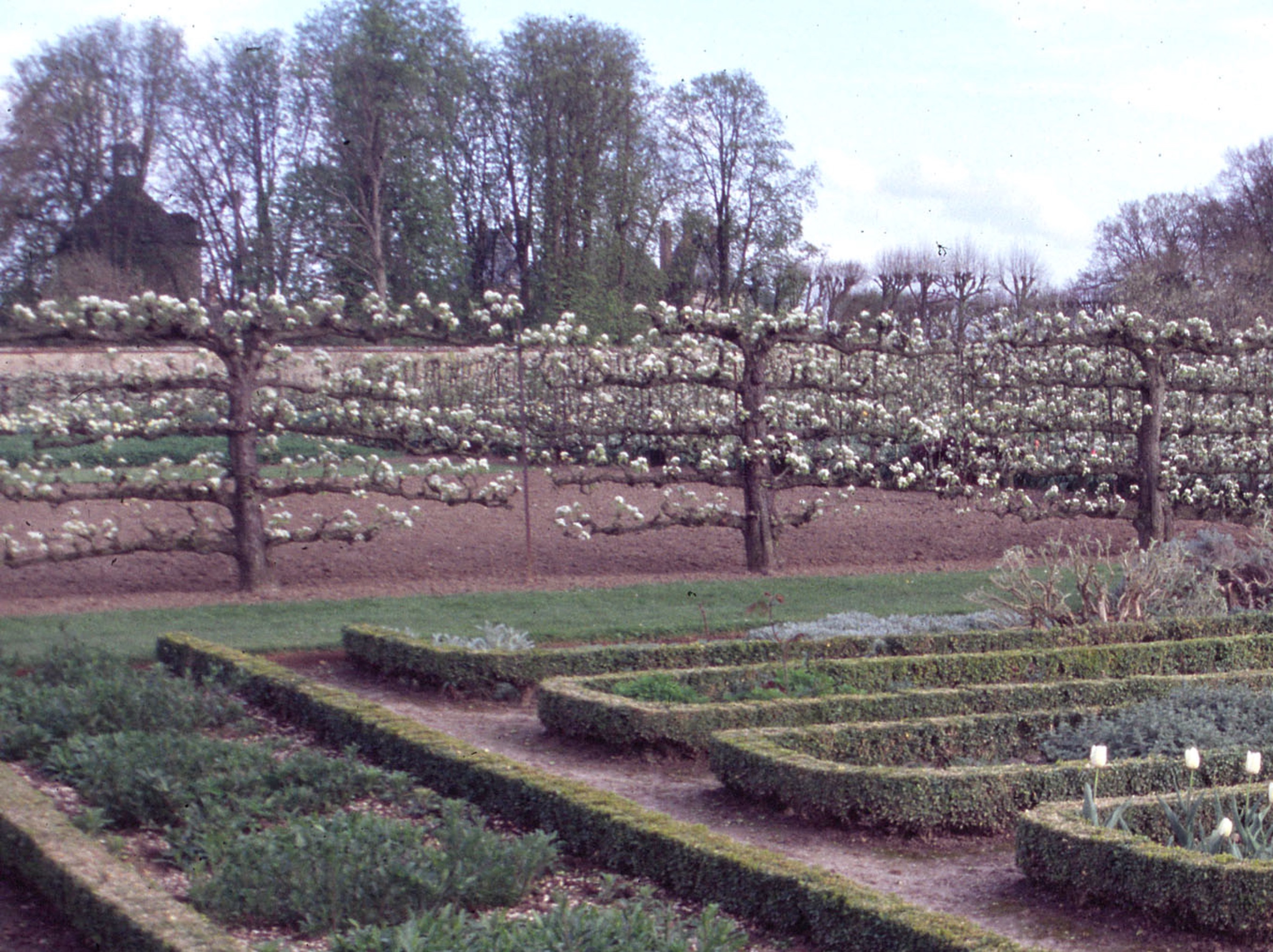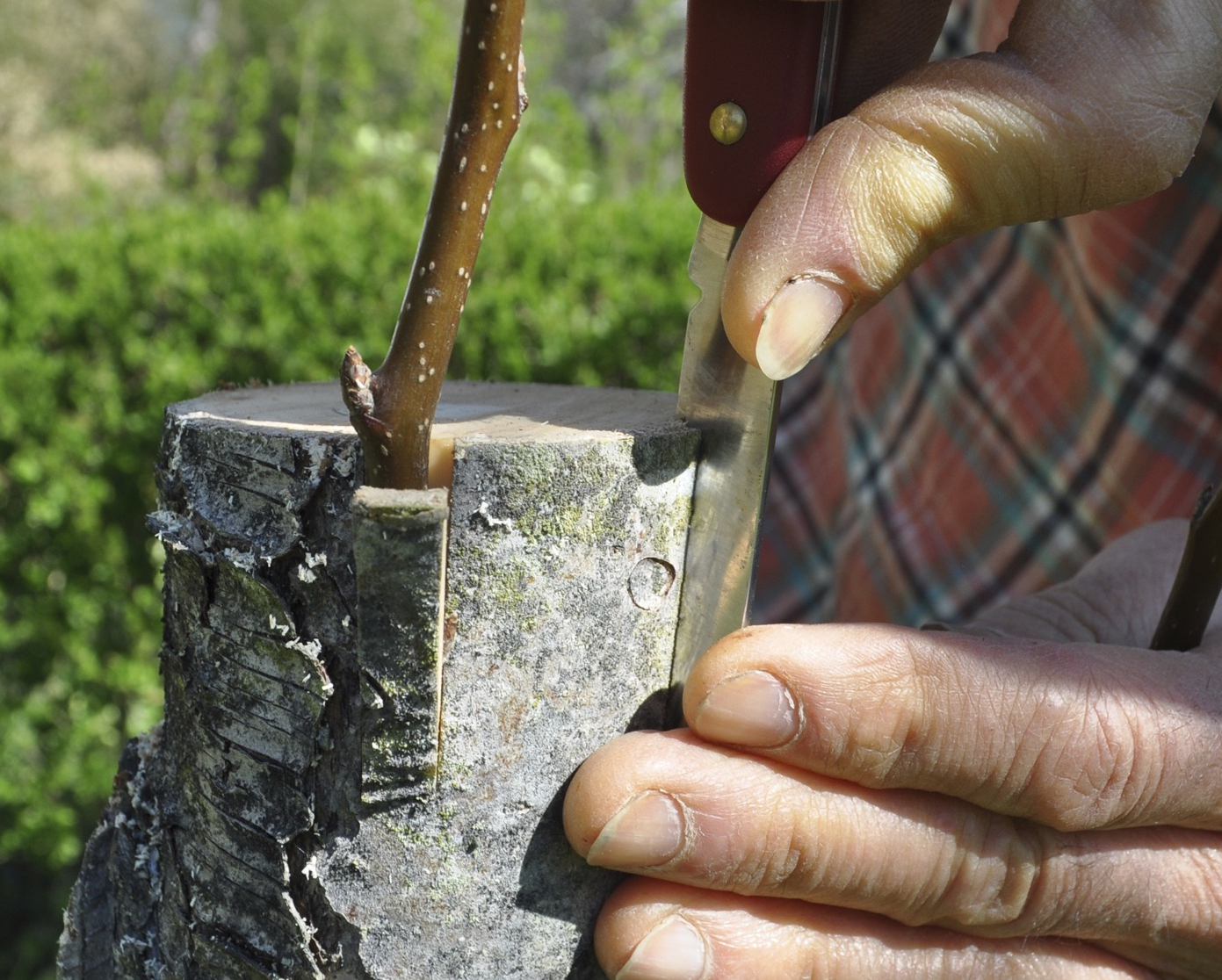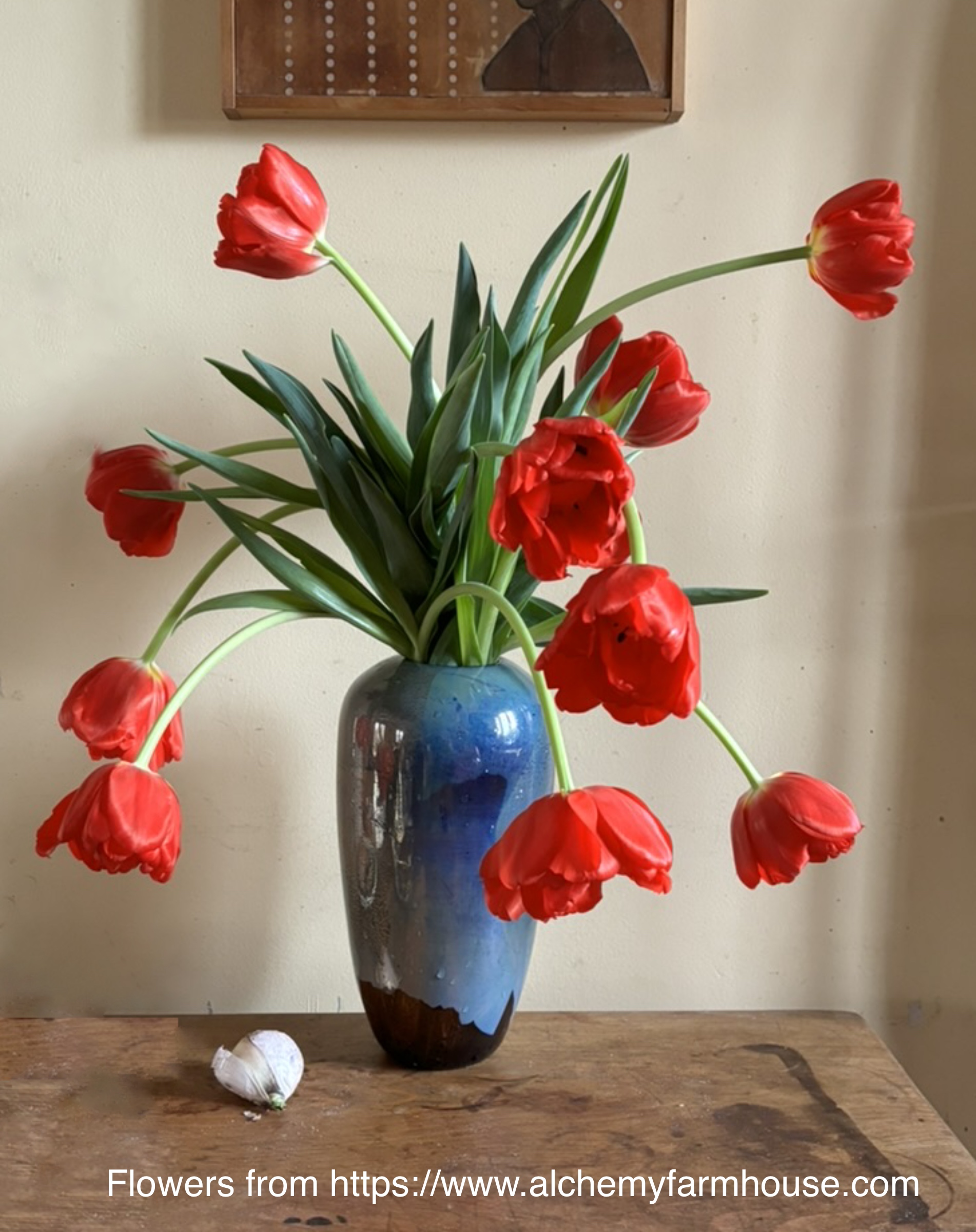FORM & FUNCTION MEET WITH ESPALIER
/6 Comments/in Design, Fruit/by Lee ReichEspalier Goals
Espalier (es-pal-YAY) is the training of a plant, usually a fruit plant, to an orderly, two-dimensional form. The word is derived from the Old French aspau, meaning a prop, and most espaliers must, in fact, be propped up with stakes or wires. This method of training and pruning plants had its formal beginnings in Europe in the 16th century, when fruit trees were trained on walls to take advantage of the strip of earth and extra warmth near those walls.
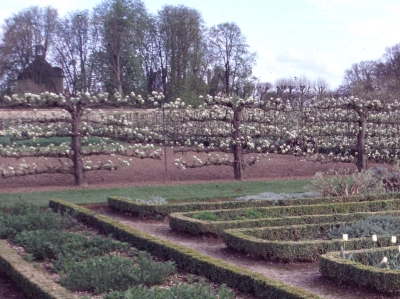
Espalier in Normandy, France
Why go to all the trouble of erecting a trellis and then having to pinch and snip a tree frequently to keep it in shape? Because a well-grown espalier represents a happy commingling of art and science, resulting in a plant that pleases eyes and, if a fruit plant, also palates. You apply this science artfully (or your art scientifically) with manipulations such as pulling exuberant stems downward to slow their growth, by cutting notches where stems threaten to remain bare, and by pruning back stems in summer to keep growth neat and fruitful. Read more
HENRY THE EIGHTH OF HORTICULTURE
/6 Comments/in Gardening, Uncategorized/by Lee ReichHow to “Make” a New Tree
Visitors to my garden this time of year are often astonished to see me lopping the tops off some of my trees. No, I’m not the Henry the Eighth of horticulture, chopping the head off any tree that no longer meets my fancy. Okay, I AM actually lopping the head off any tree that doesn’t meet my fancy.
I part ways with Ol’ Henry, though, because, first, lopping the head off a tree doesn’t kill it and, second, I graft on a new head. (Something Henry could not do.) A few years after this seemingly brutal operation, the tree looks as chipper as ever. And it has a head that I like better — or else off it comes again.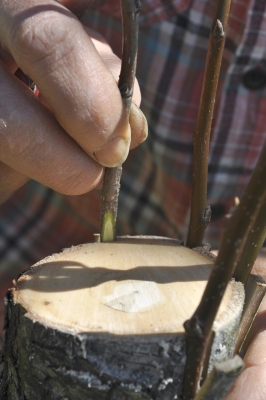
I do this type of grafting, called topworking, mostly on my pear trees, but it could equally be applied to many other kinds of fruit or ornamental trees. Read more
DEER FOOD
/1 Comment/in Flowers/by Lee ReichBig Bulbs Uneaten
Chomping down on a rosette of freshly emerging tulip leaves is just the thing to drive away winter’s doldrums — for a deer. 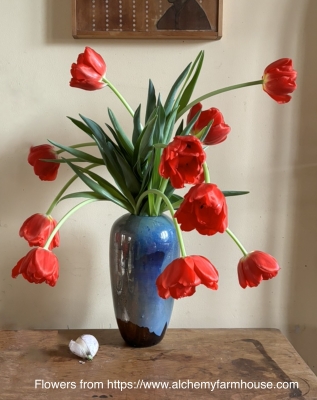 Crocuses probably taste almost as good to these creatures. There’s no need, though, for you or me to forsake the blossoms of spring bulbs; plenty of plants don’t appeal to deer palates. Read more
Crocuses probably taste almost as good to these creatures. There’s no need, though, for you or me to forsake the blossoms of spring bulbs; plenty of plants don’t appeal to deer palates. Read more

